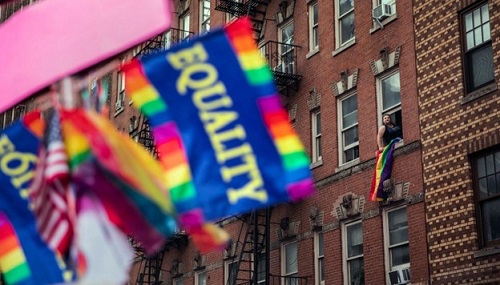Photograph courtesy of the New York Times
Introduction
In October 2021, CTV News Toronto published an article entitled “Couple asked to leave Toronto condo because they’re not married”. The article featured a story about a gay Torontonian, John Cowan, residing in a condo at Wellesley and Bay, a mere two blocks from Toronto’s Gay Village, who was asked by the condo’s management to provide proof of marriage to his partner as a prerequisite for their living together in the condo. When Cowan failed to produce that proof, the condo’s management deactivated his partner’s key fob. As justification for excluding Cowan’s partner from their home, the condo management cited a condo rule, referred to as the ‘single-family rule’ which purports to define a family as “a social unit consisting of parent(s) and their children, whether natural or adopted, and includes other relatives if living with the primary group.”
In this article, we discuss the discriminatory impact of the single-family rule on the grounds of sexual orientation, the HRTO’s unsettled jurisdiction over the issue, and the broader implications for the 2SLGBTQ+ community.
What is the ‘Single-Family Rule’?
The owner of a condominium unit does not have a classic freehold. An owner is not at liberty to deal with property in the same manner as the owner of other residential dwellings might be[1]. Sections 7(4)(b) and (c) of the Condominium Act (the “Condo Act”) permit a declaration to contain conditions or restrictions with respect to the occupation and the use of the units or common elements of units within a condominium. Additionally, section 58 of that Act empowers condo boards to make rules respecting the use of common elements and units to “promote the safety, security or welfare of the owners and of the property and assets” of the condo corporation as well as to “prevent unreasonable interference with the use and enjoyment” of the common elements and units. Owners and renters are required to abide by condo board rules that are reasonable and consistent with the Condo Act, the condo’s declaration and by-laws[2].
In Ballingall v CCC No. 111, 2015 ONSC 2484[3], a seminal case regarding the ‘single-family rule’ and the definition of “private single-family residence”, the Superior Court of Justice was unequivocal in stating that condo boards had the authority to make rules defining the meaning of “private single-family residence.” In that case, the Court also said that “unless the term "private single-family residence" is defined otherwise in a condominium corporation's governing documents, it has the following definition: “a social unit consisting of parent(s) and their children, whether natural or adopted and other relatives if living with the primary group” - a narrow definition affirmed by the Ontario Court of Appeal.[4]











